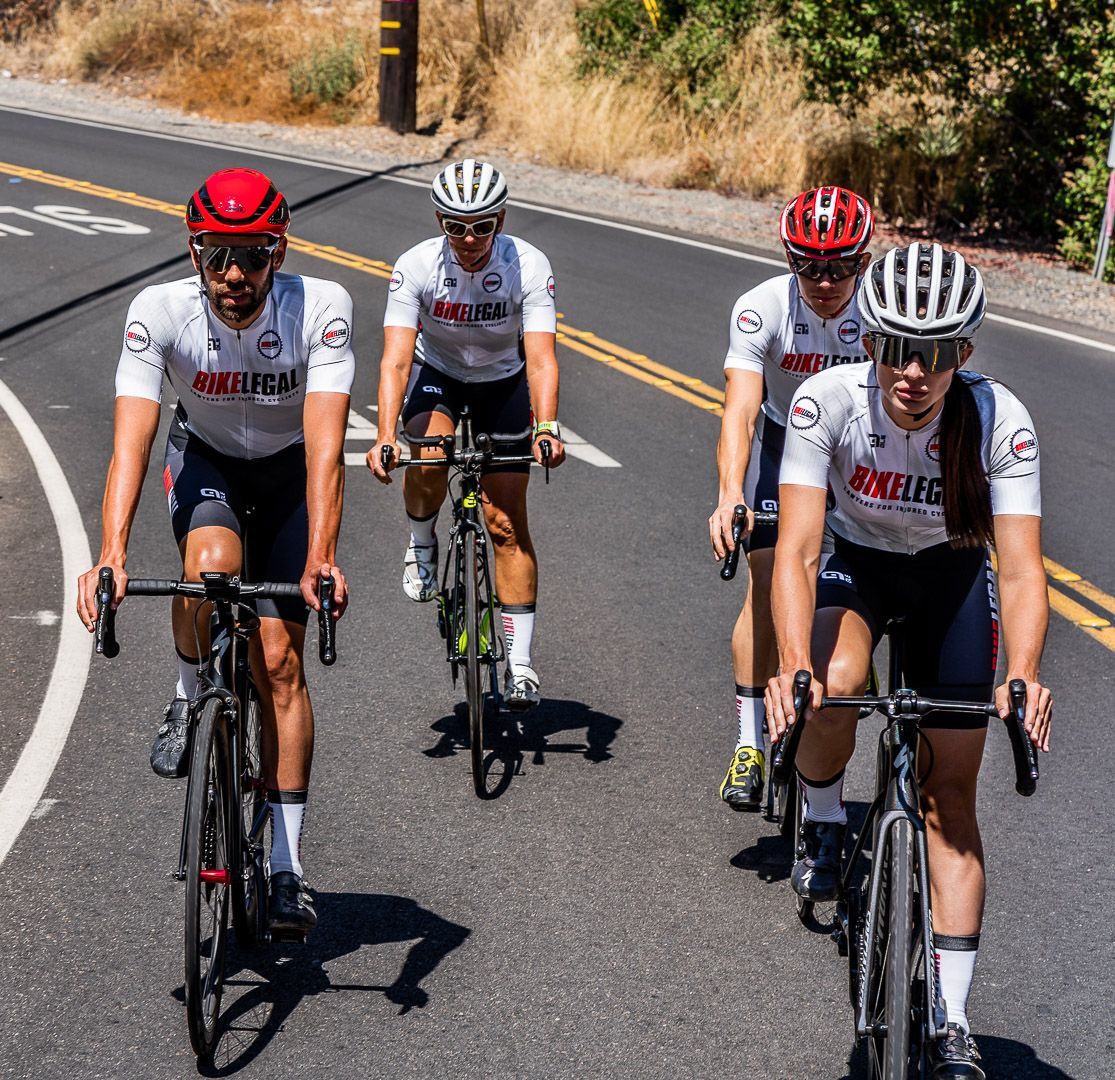9 Ways To Prevent Accident Injuries While Cycling
Follow us on
social media!
9 Ways To Prevent Accident Injuries While Cycling
Bicycle accidents can lead to severe injuries, but adhering to safety guidelines can significantly reduce your risk. By staying vigilant and prioritizing safety, you can enjoy the countless benefits of cycling while minimizing potential injuries.

Bicycle Injury Risks
Americans are cycling for various purposes, such as commuting, exercising, or simply enjoying themselves. The law considers bicycles on roadways as motor vehicles, with equal responsibilities and rights as another motorized automobiles. Unfortunately, cyclists cannot exercise their rightful road privileges, which places them at risk of severe injuries.
The CDC statistics show that 1,000 bicyclists die and over 130,000 injure in crashes in the USA every year. According to the NHTSA, in 2019, 859 bicyclists, and in 2020 about 948 pedal-cyclist lost their precious lives in crashes. The fatality rate increased by 5% from the previous year. In 2021, the number of fatalities in fatal bicycle accidents in the USA reached 966. The average number of bicyclist deaths from 2012 to 2021 is 8,344.
Most bicyclist fatalities occur in urban areas during rush hours, especially among male bikers. Alcohol is a primary cause of crashes. Single-vehicle collisions accounted for 95% of cyclist deaths in 2016.
Cyclists need to stay safe on the road, whether you are an experienced cyclist or starting a new one. Here are nine tips to remember for safe cycling on the road.
1. Always Wear A Helmet
Wearing a helmet is an important thing you can do to prevent serious injury in a bicycle accident.

According to studies, the risk of fatal head injuries in bicycle riders who do not wear helmets is approximately 14 times higher than in those wearing helmets. For this purpose, ensure proper fitting and snug helmet adjustment to your head. Replacing a damaged or previously-accident-involved helmet would reduce serious injury risks. The NHTSA's comprehensive guide on helmets can provide you with all the information you need.
2. Use Reflective Gear And Lights
Using reflective gear and lights can significantly reduce the risk of bicycle injuries, particularly in low-light conditions. When riding in the dark, cyclists should wear reflective clothing. They should attach bright bicycle accessories, including pedals, wheels, and frames.
Additionally, cyclists should use front and rear lights to increase their visibility to motorists and pedestrians. A bright white light in the front and a red light in the back are legally necessary in the USA.
Also, cyclists should check the batteries of their lights regularly and ensure they function correctly before each ride. By using reflective gear and lights, cyclists can improve their visibility and reduce their risk of accidents on the road.
3. Check Your Bicycle Before Cycling
Before hitting the road, it's essential to check the bicycle thoroughly. Ensuring the excellent condition of your cycle will help you have a safe ride. Check tire pressure, cuts, or punctures. Examine the brakes and the pads to ensure they function correctly. Inspect the chain to make sure it's lubrication. Look into the gears to confirm they are shifting smoothly.
Moreover, make sure the handlebars and saddle are tight and secure. Look at the pedals to ensure they are not loose and spin freely. Finally, test the lights and reflectors to ensure they work correctly, especially if you plan to ride at night. Checking your bicycle can help prevent accidents and provide a safe and enjoyable ride.
4. Follow Traffic Rules And Signals
To avoid bicycle accidents, following traffic rules and signals is essential. Following traffic rules mean obeying stop signs and traffic lights, signaling turns, and riding with the traffic flow.
It is also necessary to cycle predictably and defensively, anticipating the actions of drivers and other cyclists. Finally, avoid distractions such as using your phone or listening to music while riding. Remember, following traffic rules and signals can keep you safe.
5. Be Aware of Your Surroundings
Becoming aware of your surroundings is crucial to avoid bicycle accidents. Constantly monitor the road ahead and be mindful of potential hazards, such as potholes, debris, or other obstacles.
Additionally, watch for any cars, pedestrians, or cyclists sharing the road with you. Use hand signals and follow proper traffic rules to avoid collisions. Stay focused; otherwise, you can distract from your surroundings, increasing your risk of an accident.
6. Use Hand Signals And Eye Contact
Using hand signals and making eye contact with other road users is essential for safe cycling. Hand signals indicate your intended direction or action, such as turning left or right, stopping, or slowing down. Extend your left arm straight to the side to signal a left turn. Extend your left arm and hand upward to signal a right turn, forming an "L" shape with your arm. Extend your left arm and hand down to signal a stop, with your palm facing behind you.
Moreover, eye contact with drivers, pedestrians, and cyclists can help ensure they know your presence and intentions. Always look both ways before entering an intersection or turning. Remember to use hand signals early and consistently. Refrain from assuming that other road users can see you or know what you plan to do.
7. Take A Cycling Safety Course
A cycling safety course is an excellent way to enhance your cycling skills and stay safe. These courses aim to educate cyclists on traffic laws, cycling safety techniques, and emergency maneuvers. Instructors provide practical guidance on how to ride defensively, communicate with other road users, and navigate various traffic situations.
Cycling safety courses cover bicycle maintenance, the importance of wearing safety gear, and how to ride in different weather conditions. By taking a cycling safety course, you can also learn how to perform basic repairs and adjustments on your bicycle. It also reduces the likelihood of accidents caused by mechanical failures.
These courses can be in person or online; some even offer certification upon completion. Taking a cycling safety course is an investment in your safety and the safety of others. It can help you gain the confidence you need to cycle confidently and enjoyably on the road.
Even the most experienced cyclists can benefit from a cycling safety course, as an experienced bicycle accident attorney advises.
8. Stay Away From Car Doors
Cyclists should stay away from parked cars and car doors to avoid accidents. Riding too close to parked cars can be dangerous, as drivers or passengers may open their doors unexpectedly. To prevent this, you should ride safely from parked vehicles.
Also, recognize signs indicating someone is getting out of the car. You should always open your eyes to potential hazards and prepare to take evasive action.
9. Go Behind Pedestrians
When cycling in a lane shared with pedestrians, it is crucial to prioritize safety to prevent accidents. If you approach a pedestrian from behind, slow down to a maximum speed of 3 miles per hour. Ensure they know your presence by signaling your intention to pass on their left. Then, carefully and gradually approach the pedestrian while maintaining a safe distance.
Remember, it's always good to be safe than sorry. These simple safety tips and measures can help prevent accidents, and you can stay safe while cycling.
How to File a Bicycle Accident Claim?
If you're in a severe bicycle accident, it can hurt you physically and emotionally. Apart from the physical pain and trauma, handling the incident's aftermath can also be emotionally and financially exhausting. That's why it's crucial to get help from Bike Legal.
We understand how frustrating it is to face an accident. We assure you of our dedication to helping you navigate any challenging situation swiftly and efficiently. Our skilled bicycle accident lawyers can guide you on the most effective methods to prevent accidental damage.
Don't suffer alone. Contact our experienced bicycle accident attorney today for a free consultation at 877-245-3534. Let us handle your legal concerns and guide you through this difficult time.
FAQS
What Are The Common Injuries In Bicycle Accidents?
In a cycling accident, injuries can range from cuts and bruises to severe spinal cord traumatic brain injuries. Some common injuries include road rash, fractures, dislocations, concussions, and internal injuries. It is vital to seek medical attention after a cycling accident, even if you feel fine. Some injuries may not be immediately apparent. It's better to adopt preventive measures on time to prevent the long-term consequences of bicycle accidents.
What Is The First Aid For Cycling Injuries?
The first step is to assess the situation and call for emergency medical assistance if necessary. If the injuries are minor, move to a safe location to avoid more damage. In case of bleeding, you should apply direct pressure to the wound to stop bleeding. If any fractures or sprains occur, immobilize the affected area. You can use ice in swollen or painful areas. It's essential to seek professional medical attention quickly for any cycling injuries, even minor ones.

